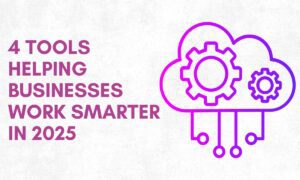Exordium
Many of us are asked in the question: how long has there been interest in blockchain technology? As for the technology itself, interest in it arose several years ago. However, mass business became interested in this technology relatively recently. Many companies have just now begun to actively shape their business strategy related to blockchain technology. As a result it becomes obvious that this technology should be available to almost everyone. After all, its essence is the presence of distributed responsibility. In other words, speaking about blockchain technology, we are talking about distribution, which means that there can be no question of its elitism.
Despite this, writing programs using blockchain technology is a rather difficult task. To meet their networking needs, any company requires certain infrastructure solutions. At the same time, not every company is ready and able to cope with the infrastructure requirements that are necessary for blockchain technology. Therefore, the best option in this case would be to engage such companies that can provide blockchain infrastructure as a service.
Blockchain features
The second name of the blockchain is “a distributed ledger technology”. And this is obvious, because the entire chain of transactions, as well as the current list of owners, is stored by many independent users on their computers. And even if one or more computers fail, the information will not be lost. For the same reason, asset ownership registries cannot be faked. After all, totally all users have an up-to-date version of this registry with all transactions. And in order for everyone to have complete and reliable information, and intruders could not record a fraudulent transaction in an existing chain, there is such a thing as consensus in blockchain technology. At its core, consensus is a process during which a group of equal nodes in a chain determine which transactions in the blockchain are valid and which are not. The version that most computers have is taken as the truth.
It remains to find out who adds new blocks to this chain? This is what validators do. Actually, validators perform several functions on the blockchain. Firstly, they store copies of the blockchain and, thereby, protect information from loss or forgery. Secondly, they confirm transactions, that is, the addition of new blocks. And thirdly, they check these transactions. When we tell about public blockchains, the number of validators is usually unlimited. Even on the contrary, the more of them, the better. Such a network is the most decentralized. But if the blockchain is private, then only certain designated participants can be validators. And such a network will be centralized. Because in this case there is a certain body that determines who can validate transactions and who cannot.
Where is blockchain technology applied? In our age of digitalization, it can be in demand everywhere. Even a usual accounting of goods in a warehouse can be performed using blockchain technology.
Illustration
Let’s look at the usefulness of the blockchain with a real-world example. Let’s say someone is selling real estate. After the transfer of money from the buyer to the seller, the ownership of the property passes to the buyer. In the usual case, both the buyer and the seller independently register monetary transactions. However, neither side can be 100% trusted. Having received the money, the buyer can say that he did not receive it, and the seller can claim that he sent the money, although this did not happen. And in order to avoid such problems, the presence of some third party is necessary, which can control and confirm this or that transaction. But even the presence of a third party creates certain risks for both the buyer and the seller. And this is not only an increase in the cost of the transaction itself, but also the risk of incomplete or incorrect information about transactions due to the fault of a third party.
Blockchain technology anticipates such problems. Because a certain system of recording transactions is being created, which is protected from unauthorized intervention and making any unauthorized changes.
And now, let’s answer the question: why does blockchain technology need cryptocurrency? The answer is simple and obvious. There is a chain of blocks to which validators add new transactions. At the same time, validators spend their resources on maintaining those computers in working condition, with the help of which these blocks are added and confirmed. Since in our world any work must be paid, blockchain technology is no exception. Validators receive remuneration. As a rule, these are commissions from all participants in transactions recorded in blocks, and a reward from the network itself. The network generates this reward according to a certain algorithm written in the code. And this reward is issued in the so-called native blockchain coins. Although in private blockchains, validation can occur without remuneration. After all, most often it is a closed corporate network that ensures the work of the company itself. This means that the purchase and maintenance of equipment within the company belongs to the category of operating costs. The situation is different in public blockchains. In this case, enthusiasm is not the main driver of the process, and the blockchain needs to pay rewards to its validators. For this, blockchain coins are needed. In other words, blockchain coins are a kind of activity motivator for validators within the framework of blockchain technology.



































